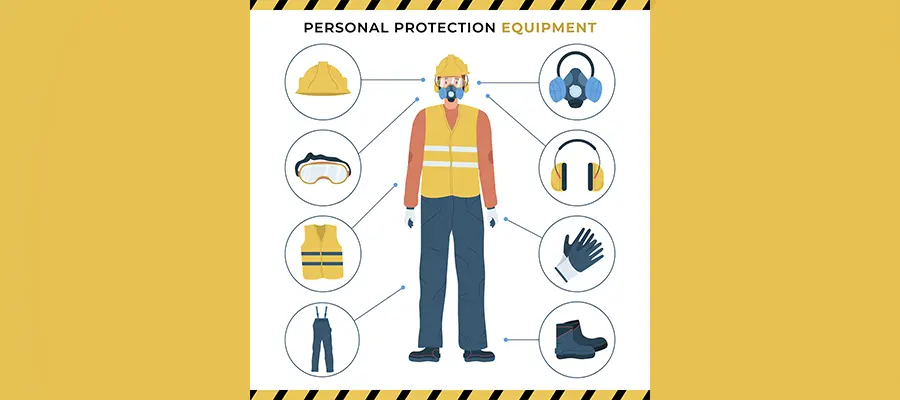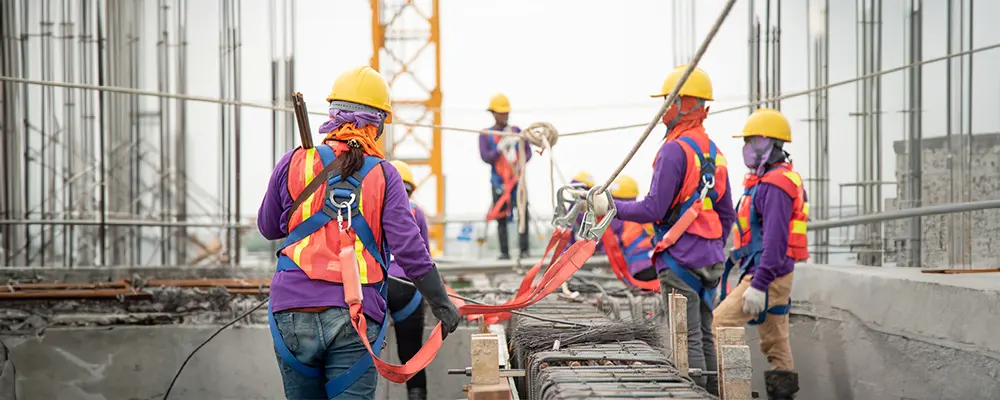Working on construction sites can indeed be dangerous. The Occupational Safety and Health Administration (OSHA) reported that in 2018, 21.1% of worker fatalities were related to construction. Construction site safety is a top concern for contractors, and they must ensure that work zones are safe and personnel are protected because this field of work carries a higher risk of accident or death than others.
In this blog, Brick & Bolt will discuss the best practices for improving construction site safety, reducing site accidents and ensuring the construction work safety of the construction workers.
Best Practices to Improve Construction Site Safety
1. Give Employee Training
In all industries, workplace safety is primarily ensured through training. Contrary to popular belief, not all employees are conversant with building site safety protocols. Hence, companies want to create a straightforward yet efficient safety training program for their employees.
In the training strategy, companies can prioritise the most frequent errors, safety dangers, and occurrences they have observed in a particular region. They must ensure that the training is delivered understandably by providing materials in several languages and, if practical, including illustrated examples. If employees can comprehend their training, they will be more engaged.
2. Conduct A Comprehensive Assessment of the Workplace:
It may seem apparent, but the first step in creating a strategy to eliminate or minimise risks and maximise safety effectively is conducting routine workplace assessments to find any possible threats. Ensure you constantly examine the construction site’s machinery, tools, and equipment to ensure they are safe to use before permitting any work to start. For example, providing all the necessary preparations and setups the night before guarantees that workers have the required instruments and supplies for their jobs.
After an evaluation, be sure to use clear signage so that all construction site safety procedures are known. Visible signage helps workers remember and understand safety protocols that must always be followed. This should include marking separate entry and exit points for workers, vehicles, and machinery. Clear signage should also exist for site amenities, first aid, and emergency fire equipment.
3. Provide Personal Protective Equipment (PPE) to Workers:
As part of the safety protocols for the construction site, all construction workers should be outfitted with the appropriate personal protective equipment (PPE). All workers must have access to comfortable, well-fitting, high-quality PPE. After use, the gear and equipment should be carefully stored and undergo routine maintenance and inspections.
If filtering facepiece respirators are needed, ensure the employees have received the necessary medical clearance and that the mask is correctly fitted to their faces to guarantee a good seal.
4. Make Sure Materials are Handled And Stored Properly:
When not in use, all construction tools and supplies should be stored carefully to avoid damage to the tools, mishaps, and injuries. Make sure that materials kept inside of buildings have safe loading restrictions. Workers should have unobstructed access to all corridors.
Every employee on a building site should know the right methods for handling and storing materials. Proper lifting techniques are important to prevent injuries during manual material handling. Operators must know the weight-lifting capacity of machinery such as cranes and forklifts when operating mechanical devices to prevent possible mishaps.
5. Encourage and Implement Best Practices
Verify that workers, site supervisors, and management uphold the regulations and best practices. Regardless of position or function, everyone holds one another accountable, so a construction site is at its safest.
Employers can motivate employees to participate in the construction site safety program by allowing them to contribute their suggestions for enhancing worksite safety. Employers should also credit employees who alert project managers to safety issues and dangers. Remind them that most incidents can be readily avoided if someone speaks up about safety concerns and to do so as soon as possible.
It’s challenging to eliminate safety dangers because of the nature of working at construction sites. Limiting and managing hazards in construction sites is always advisable, even while enforcing excellent standards may assist in preventing safety issues. This can be achieved by carrying out safety audits regularly and putting procedures in place to report, assess, and deal with possible hazards.
6. Track and Record Safety Incidents

As the saying goes, “You can’t manage what you don’t measure.” In order to efficiently handle and reduce safety risks, contractors need to maintain detailed records of injuries.
Modern construction software platforms include tools to document and report on safety issues. With routine construction safety reports, managers can lessen future effects and find the underlying cause of common dangers. Accurate and thorough documentation such as a Structural Stability Certificate may be crucial in a court case where the assignation of fault for an accident must be decided.
7. Cooperate with your Insurance Company
Contractors frequently carry a variety of insurance policies to shield their business from financial loss in the case of an error or accident during construction. Your insurance provider is motivated to minimise claims, and they frequently offer resources and advice to lower workplace risk and premium expenses. Maintaining the health and safety of your workers on the job site is crucial. However, construction companies must also prioritise safety as a core business strategy.
In conclusion, it is your duty as a contractor to ensure the safety of your staff, particularly when they are on the building site. Use these comprehensive construction safety guidelines and compliance tools to give your workers the safest possible workplace. These procedures will assist you in organising your safety management strategy and digitising your building operations, freeing you time to concentrate on completing projects of the highest calibre on schedule and, consequently, within budget.

